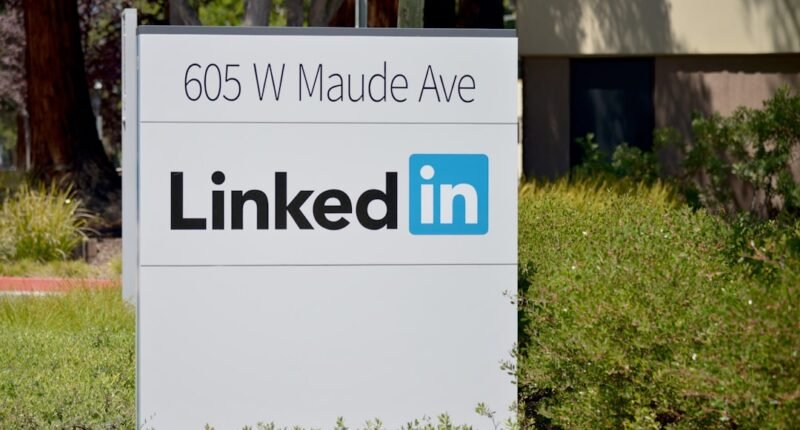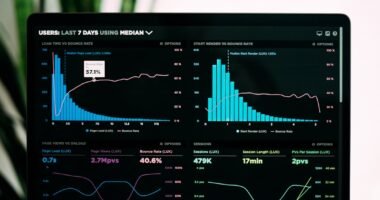Influencer marketing has grown in significance in today’s digital marketing environment for companies trying to connect with their target market and increase revenue. Influencers are now potent brand ambassadors with the ability to influence consumer behavior and purchase decisions thanks to the growth of social media & the influence of online personalities. This article will discuss the value of influencers, the advantages of using discovery tools for influencer marketing, & offer advice on how to establish trusting connections with influencers.
Key Takeaways
- Influencers have the power to sway consumer behavior and increase brand awareness.
- Discovery tools can help identify relevant influencers and streamline the outreach process.
- Building a database of influencers can save time and ensure consistency in outreach efforts.
- Social media platforms are a valuable resource for finding and vetting potential influencers.
- Analyzing metrics such as engagement rates and audience demographics can help gauge the effectiveness of influencer partnerships.
Understanding what an influencer is & why they are valuable to brands is crucial before we discuss the advantages of using discovery tools for influencer marketing. An influencer is a person who commands a sizable social media following and has the power to shape the beliefs and actions of their audience. Their followers respect their advice and opinions because they are usually authorities or ardent supporters in a particular field. Customer behavior and purchase decisions are greatly influenced by influencer marketing. Research indicates that customers are more inclined to believe endorsements from influencers than from conventional advertisements.
Indeed, a Twitter survey revealed that 49% of consumers base their purchasing decisions on recommendations from influencers. This is due to the perception that influencers are real, approachable, and objective, which makes their recommendations seem sensible. Software tools known as “discovery tools” assist brands in finding & establishing connections with influencers who would be a good fit for their campaigns. There are several advantages these tools provide for brands, such as:1.
Time-saving: By automating the process of locating influencers, discovery tools help brands save tremendous amounts of time and money. By using these tools, brands can find influencers who share their values and target audience more quickly than by tediously searching social media platforms for influencers. 2. Targeted reach: Brands can use discovery tools to focus their search on particular parameters like location, interests, & engagement rates. This guarantees that brands are interacting with influencers who genuinely want to promote their goods or services, which leads to campaigns that are more focused & successful.
| Metrics | Data |
|---|---|
| Number of Influencers | 50 |
| Average Engagement Rate | 4.5% |
| Number of Impressions | 1,000,000 |
| Number of Clicks | 10,000 |
| Conversion Rate | 2.5% |
Three. Data-driven choices: Discovery tools give marketers useful information about influencers, including audience demographics, engagement rates, and previous campaign success. By using this data, brands can make well-informed choices about which influencers to work with, ensuring that the target audience for their campaigns is reached. One of the most important aspects of influencer marketing is creating an influencer database. Brands may find new influencers for upcoming campaigns and maintain track of influencers they have previously collaborated with by using this database, which is a great resource.
The following advice will help you create an influencer database:1. Find influencers through research: To find influencers who fit with your target audience and brand values, start by looking into influencers in your niche. Seek out influencers with large followings and high interaction rates. 2. Updating the database on a regular basis will help to guarantee that the data in your influencers database is correct and pertinent.
Observe any modifications to the social media handles, contact details, & audience demographics of influencers. 3. Sort influencers: Sort influencers according to their audience size, engagement rates, and niche. As a result, finding influencers for upcoming campaigns will be simpler for you. Social media sites are a treasure trove for locating influencers.
These are a few instances of social media sites where influencer marketing is frequently practiced:1. In terms of influencer marketing, Instagram is one of the most widely used platforms. Influencers can use visually appealing content to highlight their products, interests, and way of life. Influencers can be found by brands using location tags, hashtags, & pertinent keywords. 2.
YouTube: This is yet another effective influencer marketing platform, particularly for companies that cater to younger consumers. YouTube influencers produce some of the most influential and captivating video content. Influencers can be found by brands using criteria like video views, subscriber count, & niche. Three.
TikTok: Gen Z users in particular have been using TikTok increasingly frequently in recent years. By looking for relevant hashtags and perusing the “For You” page, brands can locate influencers on TikTok. Influencers on TikTok are renowned for their imaginative and enjoyable content.
Influencers can be found for campaigns using a variety of influencer discovery tools that are available to brands. The following advice will help you make the most of these tools:1. Establish your criteria: Establish your selection criteria for influencers prior to utilizing an influencer discovery tool.
Think about things like the demographics of your audience, your engagement rate, and the relevance of your niche. This approach can assist you in focusing your search and identifying influencers who most closely align with your brand. 2. Employ a variety of tools: Distinct discovery tools provide varying functionalities and influencer databases.
Use a variety of tools & cross-reference the findings to obtain a complete picture of the influencer market. 3. After identifying possible influencers with the aid of discovery tools, evaluate their data and metrics to make sure they support the objectives of your campaign. Examine elements like audience demographics, engagement levels, and previous campaign results. When assessing the success of influencer marketing campaigns, it is essential to analyze influencer metrics.
When assessing influencers, brands ought to take into account the following metrics: 1. Reach: The quantity of individuals who view an influencer’s content is referred to as reach. An influencer’s audience size should be taken into account when assessing how they might affect your campaign. 2.
Engagement: This refers to the amount of likes, comments, and shares that an influencer’s content receives. Elevated engagement rates suggest that the audience of an influencer is actively interacting with their content, thereby potentially resulting in increased brand recognition & conversions. 3. Authenticity is a crucial aspect to take into account when assessing influencers. Seek out influencers who are renowned for their openness and honesty & who truly connect with their audience. Making impactful outreach emails is crucial to capturing the interest of the influencers you wish to work with once you have identified them.
The following advice can help you write persuasive influencer outreach emails:1. Customize your emails: Make the effort to refer to the influencer by name and personalize your outreach emails. Express your sincere interest in working with them and that you have done your homework. 2. Make sure to be precise & succinct when writing outreach emails. Provide the influencer with a clear explanation of the email’s goal, what you have to offer, and how collaboration will benefit them. 3.
Develop relationships: The secret to effective influencer marketing is to establish a rapport with influencers. Be genuinely interested in what they’re doing, interact with their content, and provide value that goes beyond a one-time partnership. Long-term success in influencer marketing requires forging solid bonds with influencers. The following advice can help you establish trusting bonds with influencers:1. Communicate with influencers in an honest and open manner.
Inform them about the specifics, schedule, and goals of the campaign. 2. Be clear about the objectives and standards of your brand. Clearly communicate what you are looking for in the collaboration and what you can offer in return. 3. Mutual respect: Treat influencers with respect & value their expertise.
Recognize their contributions and give credit where it is due. Measuring the success of influencer marketing campaigns is crucial for evaluating their effectiveness and making data-driven decisions for future campaigns. Here are some metrics that brands should consider when evaluating the success of their campaigns:1. Conversions: Measure the number of conversions generated through influencer marketing campaigns.
This could include sales, sign-ups, or downloads. 2. Engagement: Measure the level of engagement generated by influencer content, such as likes, comments, and shares. High engagement rates indicate that the content resonated with the audience. 3. Brand awareness: Measure the increase in brand awareness as a result of influencer marketing campaigns. This could include metrics such as website traffic, social media followers, and mentions. ConclusionInfluencer marketing has become an integral part of the digital marketing landscape, and discovery tools play a crucial role in identifying and building relationships with influencers.
By using these tools effectively, brands can save time, reach a targeted audience, & make data-driven decisions for their influencer marketing campaigns. Building strong relationships with influencers is key to long-term success, and measuring the success of influencer marketing campaigns allows brands to evaluate their effectiveness & make improvements for future campaigns. As influencer marketing continues to evolve, brands that embrace discovery tools and build strong relationships with influencers will have a competitive edge in reaching their target audience & driving sales.
Looking for an effective influencer discovery tool? Look no further! We recently came across an article on influencers.email that provides valuable insights into the world of influencer marketing. This article titled “Hello World: A Comprehensive Guide to Influencer Discovery” is a must-read for anyone looking to leverage the power of influencers to boost their brand. It offers practical tips and strategies on how to identify the right influencers for your niche and maximize your campaign’s success. Check out the article here and take your influencer marketing game to the next level!
FAQs
What is an influencer discovery tool?
An influencer discovery tool is a software or platform that helps businesses and marketers find social media influencers who can promote their products or services to a targeted audience.
How does an influencer discovery tool work?
An influencer discovery tool uses algorithms and data analysis to identify social media users who have a large following and high engagement rates. The tool can filter influencers based on various criteria such as location, niche, audience demographics, and engagement metrics.
What are the benefits of using an influencer discovery tool?
Using an influencer discovery tool can save time and effort in finding the right influencers for a marketing campaign. It can also help businesses and marketers identify influencers who have a genuine following and can provide better ROI for their investment.
What are the features of an influencer discovery tool?
An influencer discovery tool can provide features such as influencer search, audience insights, engagement metrics, campaign management, and performance tracking. Some tools may also offer influencer outreach and collaboration features.
What are some popular influencer discovery tools?
Some popular influencer discovery tools include HypeAuditor, Klear, Upfluence, AspireIQ, and Grin. These tools offer various features and pricing plans to suit different business needs and budgets.






